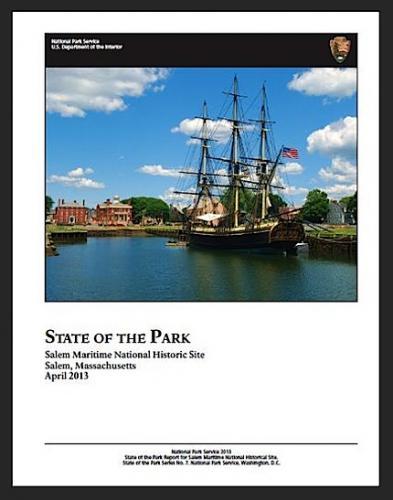What condition are the national parks in? That's an easy, and important, question to ask, but one not always easily answered.
After all, we can go to Yellowstone National Park and stand in front of Old Faithful as it erupts, with the gorgeous Old Faithful Inn behind us, and figure that everything is fine and well with the park. For many of the more than 400 units of the National Park System, you can do the same thing: enter the park, walk or drive around, talk to rangers, and come away with a rather cursory impression of just what condition the park is in.
Since about 2000 the National Parks Conservation Association evaluated units of the National Park System through its "State of the Parks" program. These evaluations focused largely on the fiscal health of individual parks, staffing levels, the condition of their resources, and some of their programs. That program actually had its roots extend back to 1980, when the National Park Service tried to guage the condition of its parks through questionnaires sent to superintendents.
While the Park Service wanted to produce in-depth reports on its units, Congress never appropriated the money for the work. So about the year 2000 the NPCA stepped forward, found funding for the project, and got to work, said Dr. Jim Nations, who oversaw the work beginning in 2003.
"NPCA created an independent, peer-reviewed methodology for cultural resources, natural resources, and then started applying it," he explained. "It took us a couple years to nail it down, but we had it reviewed by scientists at Stanford, and the Ecological Socity of America, and cultural resource specialists, and architects and such, and then we started doing them."
Ten or 11 years into the work, the Park Service came to NPCA and told the group it was ready to take over the task. What they've produced, at least in the first seven reports, are deep, comprehensive documents that look at cultural resources, natural resources, the visitor experience, and infrastructure conditions.
“I’ve been looking at them and I think they’ve done an impressive job. There are some differences between what we did and what they are doing, but I think that the reports that they are creating are definitely serving their purpose," Dr. Nations said. "The main difference being that our goal was to use the individual park assessments to do two things: One, tell the story of that particular park and what we felt needed to be done and what the Park Service would tell us they thought needed to be done to improve the park. But simultaneously, we were using each of the studies to build a picture of the National Park System as a whole.
“I don’t know that they’re heading that direction. They’re using the individual assessments as management tools to improve management of the individual parks, and that’s a laudable goal," he said.
At Salem Maritime National Historic Site in Massachusetts, Superintendent Michael Quijano-West said the report prepared for his unit of the park system provided “a good overview of the condition of the priority resources at the park.”
“It lets us see the entire park at a moment in time. It's important because this is a complex park and our stewardship responsibilities are diverse and challenging," said Superintendent Quijano-West. "For example, we offer educational programs, maintain Friendship of Salem, monitor rare species, preserve historic buildings, and oversee visitor safety. We will use this information to set our priorities for improvement and report on our progress to the American people.”
If nothing else, said Dr. Nations, the reports are highly comprehensive.
“I’m impressed that you can go into it and you can just keep digging, digging, digging down to where did they get this information, he said, noting that the reports provide references for where the information was gathered.
If there's a flaw with the reports, Dr. Nations said, it's the color-coded system of circles, lines, and arrows the Park Service used to identify trends and conditions.
“You figure that you have three colors, three directions of arrows, and you’ve got three different levels of confidence. You have 27 levels of permutations there," he noted. "Twenty-seven possible different symobls, and you have to be either really paying attention, or you need a key to figure out now what exactly does that green circle with the sideways arrow and the dotted line, what does that mean?
“I thought ours was a little simpler. We gave it a number, 1-100. Everybody knows that since first grade."
Other state the park reports were recently prepared for Big Hole National Battlefield in Montana, Cabrillo National Monument in California, Klondike Gold Rush National Historical Park in Alaska, Mississippi National River and Recreation Area in Minnesota, Organ Pipe Cactus National Monument in Arizona, and Saugus Iron Works National Historical Site in Boston.
To get a sense for whether the NPCA and Park Service evaluators reached the same conclusions, there are three park units that both organizations looked at: Big Hole National Battlefield, Cabrillo National Monument, and Mississippi National River and Recreation Area.
Additional State of the Park reports will be released in the months to come. National Park Service officials hope that by the time the agency marks its centennial in 2016 that as many as 50 parks will have completed these in-depth assessments.


 Support Essential Coverage of Essential Places
Support Essential Coverage of Essential Places






